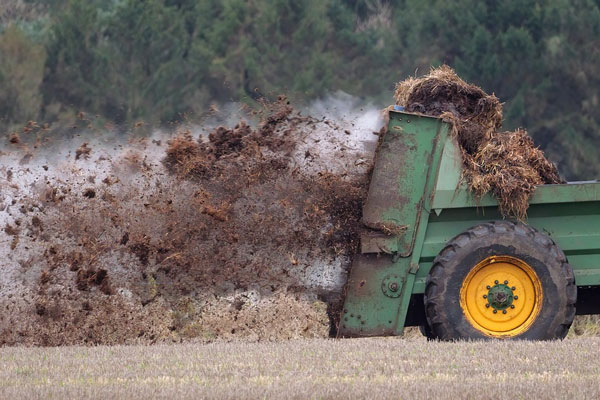Wow, time really does fly. I can’t believe I’m celebrating three years with MSWCD. It has been a wonderful learning experience these past three years. I continue to learn something new every day, and I’m getting a clearer understanding of the importance of conserving our natural resources. This year I have decided to write about some of the Best Management Practices (BMPs) that make a conservation plan successful. Manure Management will be my first topic.
I haven’t thought much about where or what happens to manure once it hits the barn floor. I read that a 1000-pound horse can produce 50 pounds of manure per day, then add the bedding material, and that is a large amount of waste to deal with. Just think of the amount of waste there would be if 10 horses were kept in one barn. You may be thinking, why not use the nutrient rich manure as a fertilizer on cropland? Good idea, but even too much of a good thing can lead to big problems. Uncontained manure and/or over-fertilized fields can pollute ground and surface water if not managed properly.
Success is achieved by setting goals. Goals are accomplished by creating a plan which include the practices needed to achieve the goal. Manure management is a practice under a conservation plan to reduce ground and surface water pollution created by farm animal waste. The goal of this practice is to prevent contamination of water in lakes, streams, springs, and wells.
There are several was to manage manure. I will not be able to write about all of them, but I’m going to try to hit the highlight of manure as a fertilizer and manure containment. For manure to be used as an effective fertilizer, it needs to be applied at a rate that will meet the crop’s nutrient needs. Timing, location, and incorporation are important to successfully use manure as a fertilizer. Manure needs to be spread at the right time. Avoid spreading manure in the winter or spring. Manure applied to frozen ground can pollute surface water at spring thaw run-off. If applied in the winter, be sure to apply on sod-covered fields. This will help with manure run-off. In early spring, the soil is usually saturated, so avoid spreading manure in the spring.
Avoid spreading manure in certain locations, such as sloped lands or areas where manure could leak into water sources. Don’t spread manure in areas that are prone to flooding. Also, incorporating manure into the soil makes it less likely for run-off. Be sure to have the soil and/or manure tested. This will provide important information regarding what nutrients are missing in the soil and what nutrients are present in the manure. The information provided through testing will allow the farmer to know when to apply manure and how much to apply. As I mentioned, too much of a good thing can become a problem for water quality.
When spreading manure is not an option, timing is wrong or soil does not need the nutrients, manure needs to be contained to prevent pollutants from entering waterways. Some containment options are stockpiling, dry stack, and composting. Stockpiling is just as it sounds. The manure can be piled in a convenient location, on compacted soil. Clay soil makes an excellent base for stockpiling manure. Have your pile on a slight slop to allow it to drain into a vegetated filter strip. Keep it covered with a tarp to reduce smell and files. Covering the manure pile will also help to keep it from getting soaked by rain. Stockpiling is not ideal for large amounts of manure or to be kept for an extended period. It is the lowest cost option for containing manure.
Dry stack is the most common and practical storage method for small livestock operations. The key component for dry stacking is a water-resistant floor and three walls. Concrete is the best material to use for the floor. A concrete floor keeps manure from entering the soil and seeping into ground water. The floor should be slightly sloped, which will allow drainage to flow to a vegetated filter strip. The walls can be made of poured concrete, cinder blocks, horizontal or vertical timber. The walls should be a minimum of 4 feet in height and be able to contain 3 to 6 months of manure. The cost for dry stacking is moderate.
Composting is the most popular due to the finished results of the manure product, which is highly marketable. The finished compost is crumbly, low in odor, and resembles rich topsoil. This compost is popular with gardeners and landscapers. Composting requires careful management to produce a quality product. Temperature of compost must be tracked to make sure the core of the pile reaches 140 degrees, which kills pathogens and allows for a stable product. Composting manure can be a finished product within 6 weeks, when properly mixed and aerated. The cost for composting is moderate to high.
After reading about manure management, you may have one question. What is a vegetation strip? I have mentioned it several times while writing about manure management. Keep checking my blog to find out about vegetation strips, another Best Management Practice or BMP, in the soil and water world.
Our annual berry plant sale is going on now through April, 26th. | Order Online Today! • Our annual fish sale is going on now through April, 26th. Pickup day is May 7th. | Order Online Today! • We will be on Live At Noon on Monday, April 29, 2024 with NRCS.
